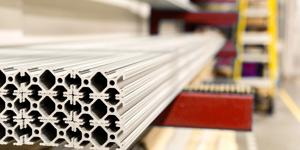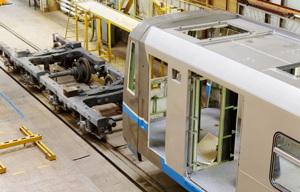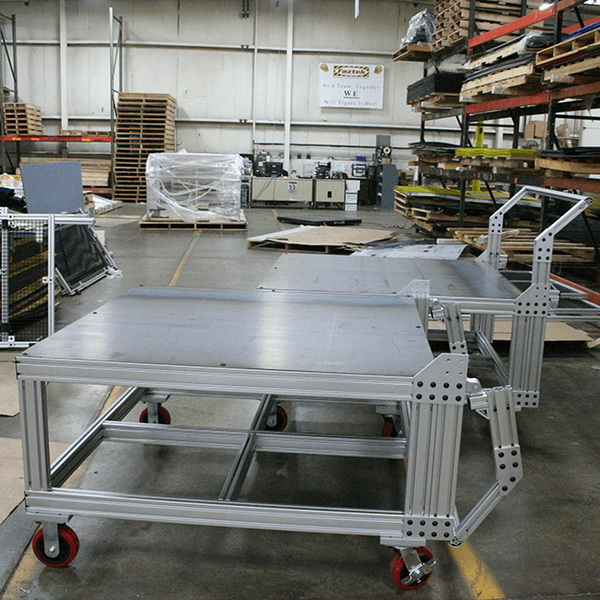Content Menu
● Understanding Aluminum Extrusion Carriages
>> Key Features of Aluminum Extrusion Carriages
● Benefits of Using Aluminum Extrusion Carriages
>> Cost-Effectiveness
>> Durability and Strength
>> Versatility
● Applications of Aluminum Extrusion Carriages
>> Additional Applications
● The Manufacturing Process
>> Advanced Manufacturing Techniques
● Environmental Considerations
>> Life Cycle Analysis
● Economic Impact
● Case Studies
● Conclusion
● FAQ
>> 1. What are aluminum extrusion carriages used for?
>> 2. How do aluminum extrusions compare to steel?
>> 3. Can aluminum extrusion carriages be customized?
>> 4. Are aluminum extrusion carriages environmentally friendly?
>> 5. How easy is it to assemble aluminum extrusion carriages?
In the realm of industrial manufacturing, choosing the right materials and components is crucial to ensuring efficiency, durability, and cost-effectiveness. One such component that has gained immense popularity is the aluminum extrusion carriage. This article delves into the myriad reasons why aluminum extrusion carriages are an excellent choice for various industrial applications, highlighting their benefits, applications, and the overall impact they can have on your projects.

Understanding Aluminum Extrusion Carriages
Aluminum extrusion carriages are structural components made from aluminum that have been shaped through an extrusion process. This involves forcing heated aluminum through a die to create specific profiles that can be used in various applications. The resulting carriages are lightweight yet strong, making them ideal for a range of industrial uses.
Key Features of Aluminum Extrusion Carriages
- Lightweight: Aluminum is significantly lighter than steel, making it easier to handle and install.
- Corrosion Resistance: Aluminum naturally forms a protective oxide layer that resists corrosion, making it suitable for environments where exposure to moisture or chemicals is a concern.
- Customizability: The extrusion process allows for a wide variety of shapes and sizes, enabling customization to meet specific project requirements.
- Ease of Assembly: Aluminum extrusions can be easily assembled and disassembled without the need for welding, facilitating quick modifications or repairs.
Benefits of Using Aluminum Extrusion Carriages
The advantages of using aluminum extrusion carriages in industrial projects are manifold:
Cost-Effectiveness
Aluminum extrusion is a cost-effective manufacturing method. The production of dies for extrusions is less expensive than for other methods like casting or machining. This results in lower overall costs for manufacturing custom parts.
Durability and Strength
Despite being lightweight, aluminum extrusions offer high strength-to-weight ratios. This makes them suitable for applications that require robust support without adding excessive weight.
Versatility
Aluminum extrusion carriages can be used in various applications across different industries, including:
- Manufacturing: Used in conveyor systems and assembly lines.
- Construction: Ideal for frameworks in buildings and structures.
- Transportation: Employed in vehicle frames and components due to their lightweight nature.
Applications of Aluminum Extrusion Carriages
Aluminum extrusion carriages find applications in numerous sectors:
- Automotive Industry: Used to create lightweight vehicle components that enhance fuel efficiency.
- Aerospace: Essential in aircraft manufacturing where weight reduction is critical.
- Medical Equipment: Utilized in constructing equipment that requires high precision and reliability.
- Robotics: Commonly found in robotic arms and automated systems due to their adaptability and strength.
Additional Applications
Beyond these primary industries, aluminum extrusion carriages are also utilized in:
- Food Processing: In conveyor systems where hygiene is paramount, aluminum's resistance to corrosion makes it a favored choice.
- Electronics Manufacturing: Used in equipment racks and enclosures due to their lightweight properties and ability to dissipate heat effectively.
- Renewable Energy: Employed in solar panel mounting systems where strength and lightness are essential for optimal performance.
The Manufacturing Process
The process of creating aluminum extrusion carriages involves several key steps:
1. Designing the Die: Engineers design a die based on the desired profile of the carriage.
2. Heating the Aluminum: Aluminum billets are heated until they become malleable.
3. Extrusion: The heated aluminum is forced through the die using hydraulic pressure.
4. Cooling and Cutting: Once extruded, the aluminum is cooled and cut to the required lengths.
5. Finishing: Additional processes like anodizing or painting may be applied for aesthetic or protective purposes.
Advanced Manufacturing Techniques
Modern advancements in manufacturing techniques have further enhanced the capabilities of aluminum extrusion carriages:
- 3D Printing Integration: Some manufacturers are exploring hybrid approaches that combine traditional aluminum extrusions with 3D printed components for complex geometries that enhance functionality.
- Automated Production Lines: Automation has streamlined production processes, allowing for higher precision and reduced labor costs while maintaining quality control.

Environmental Considerations
Aluminum is one of the most sustainable materials available today. It can be recycled indefinitely without losing its properties, contributing to reduced waste and energy consumption in manufacturing processes. By choosing aluminum extrusion carriages, companies can align themselves with sustainable practices while benefiting from high-performance materials.
Life Cycle Analysis
Conducting a life cycle analysis (LCA) on aluminum products reveals their environmental impact over time. From extraction through production to end-of-life recycling, aluminum demonstrates lower overall carbon footprints compared to many alternatives. This makes it an attractive option for companies aiming to reduce their environmental impact while maintaining high standards of quality and performance.
Economic Impact
Investing in aluminum extrusion carriages can positively influence a company's bottom line:
- Reduced Maintenance Costs: Due to their durability and corrosion resistance, aluminum extrusions often require less maintenance than other materials.
- Increased Efficiency: Lightweight components can lead to faster assembly times and improved operational efficiency across manufacturing processes.
- Long-Term Savings: Although initial costs may vary depending on customization needs, the long-term savings associated with durability and reduced maintenance make aluminum an economically sound choice.
Case Studies
To illustrate the effectiveness of aluminum extrusion carriages in real-world applications, consider these case studies:
1. Automotive Manufacturer's Weight Reduction Initiative
A leading automotive manufacturer replaced steel components with aluminum extrusions in their vehicle assembly line. This change resulted in a 20% reduction in weight per vehicle, leading to improved fuel efficiency without compromising safety standards.
2. Aerospace Component Supplier
An aerospace supplier utilized custom-designed aluminum extrusion carriages for their assembly processes. The lightweight nature of these components allowed for more efficient handling during production while meeting stringent industry regulations regarding strength and safety.
3. Robotics Company Innovation
A robotics company integrated aluminum extrusion carriages into their robotic arms, enhancing flexibility while maintaining structural integrity. The result was a more agile robotic system capable of performing complex tasks with precision.
Conclusion
In summary, aluminum extrusion carriages represent a smart choice for industrial projects due to their lightweight nature, strength, cost-effectiveness, versatility, and sustainability. Whether you're involved in manufacturing, construction, or any other industry requiring robust structural components, aluminum extrusion carriages provide an excellent solution that meets modern demands for efficiency and environmental responsibility.
By understanding the benefits and applications of these innovative components, businesses can make informed decisions that enhance productivity while contributing positively to environmental sustainability efforts.

FAQ
1. What are aluminum extrusion carriages used for?
Aluminum extrusion carriages are primarily used in various industrial applications such as manufacturing equipment, transportation systems, aerospace components, and medical devices due to their lightweight and durable properties.
2. How do aluminum extrusions compare to steel?
Aluminum extrusions are lighter than steel while offering similar strength levels. They also resist corrosion better than steel, making them suitable for environments where moisture or chemicals are present.
3. Can aluminum extrusion carriages be customized?
Yes, one of the significant advantages of aluminum extrusions is their customizability. They can be manufactured in various shapes and sizes according to specific project requirements.
4. Are aluminum extrusion carriages environmentally friendly?
Absolutely! Aluminum can be recycled indefinitely without losing its quality. Using aluminum helps reduce waste and promotes sustainable manufacturing practices.
5. How easy is it to assemble aluminum extrusion carriages?
Aluminum extrusions can be assembled quickly without welding or permanent fixtures, allowing for easy modifications and repairs as needed.






















